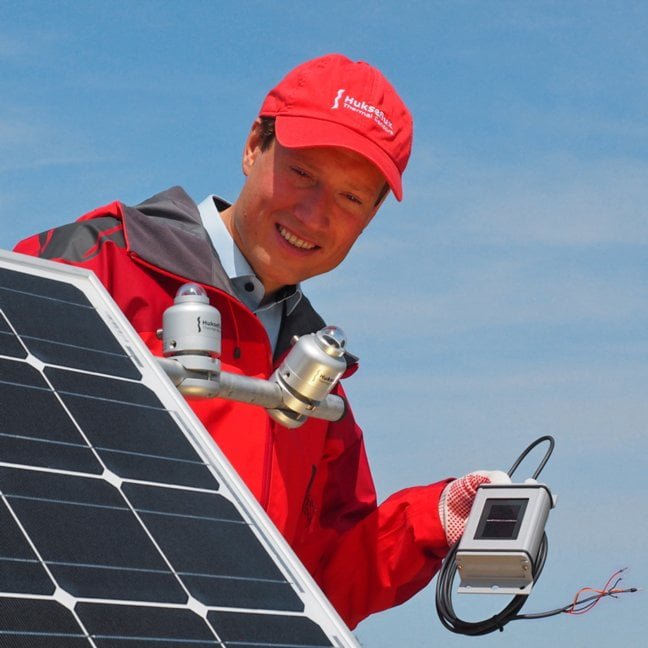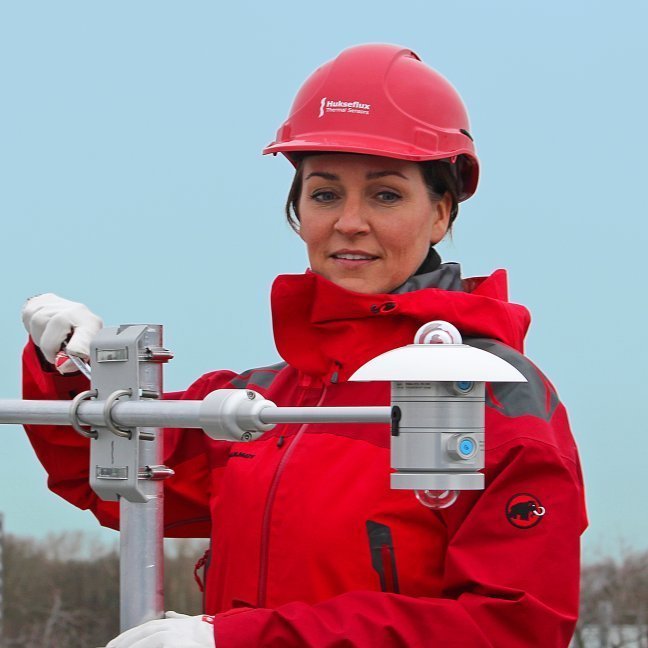Best Hukseflux Pyranometer Guide 2024
Introduction to Hukseflux Pyranometers
Hukseflux is a leading manufacturer of pyranometers, which are instruments used to measure the amount of solar radiation that reaches the Earth’s surface. These devices are essential components in solar energy systems and help to determine the amount of solar energy available at a particular location. Hukseflux pyranometers are known for their accuracy, reliability, and durability, making them a top choice for solar energy professionals worldwide.
Why are Hukseflux Pyranometers Important in Solar Energy Systems?
Solar energy systems rely on the amount of solar radiation available at a specific location to determine the amount of energy that can be produced. Pyranometers are used to measure the amount of solar radiation that reaches the Earth’s surface, which helps to determine the amount of energy that can be generated. Hukseflux pyranometers are essential in solar energy systems because they provide accurate measurements of solar radiation, ensuring that the system operates efficiently.

Types of Hukseflux Pyranometers
There are two main types of Hukseflux pyranometers: thermopile-based and photodiode-based.
Thermopile-based Pyranometer
Thermopile-based pyranometers use thermopiles to measure solar radiation. A thermopile is a device that generates a voltage when exposed to heat. In a pyranometer, the thermopile is exposed to solar radiation, and the resulting voltage is proportional to the amount of radiation received.
Photodiode-based Pyranometer
Photodiode-based pyranometers use photodiodes to measure solar radiation. A photodiode is a semiconductor device that generates a current when exposed to light. In a pyranometer, the photodiode is exposed to solar radiation, and the resulting current is proportional to the amount of radiation received.
Thermopile vs. Photodiode-based Pyranometers
Both types of pyranometers have their advantages and disadvantages. Thermopile-based pyranometers are more accurate and stable than photodiode-based pyranometers. However, photodiode-based pyranometers are more sensitive and can detect changes in solar radiation as small as 0.1 W/m², making them more suitable for research applications where high sensitivity is required. Thermopile-based pyranometers are more durable and can withstand harsh environmental conditions better than photodiode-based pyranometers. Additionally, thermopile-based pyranometers have a lower temperature dependency than photodiode-based pyranometers, making them more accurate in extreme temperature conditions.
In summary, the choice between a thermopile-based pyranometer and a photodiode-based pyranometer depends on the specific application and the level of accuracy, sensitivity, and durability required. Hukseflux offers a range of pyranometers with different specifications to meet the diverse needs of solar energy professionals.

Factors to Consider When Choosing a Hukseflux Pyranometer
When choosing a Hukseflux pyranometer, there are several factors to consider:
Accuracy
Accuracy is one of the most important factors to consider when choosing a pyranometer. The accuracy of a pyranometer is determined by its ability to measure solar radiation. Hukseflux pyranometers are known for their high accuracy and can measure solar radiation with an accuracy of up to ± 1.5%.
Sensitivity
Sensitivity refers to the ability of a pyranometer to detect small changes in solar radiation. A pyranometer with high sensitivity can detect even small changes in solar radiation, which is essential for accurate measurements. Hukseflux pyranometers have high sensitivity and can detect changes in solar radiation as small as 1 W/m2.
Response Time
Response time refers to the time it takes for a pyranometer to respond to changes in solar radiation. A pyranometer with a fast response time is essential for measuring rapid changes in solar radiation. Hukseflux pyranometers have a response time of less than 1 second, making them ideal for measuring rapid changes in solar radiation.
Temperature Dependency
Temperature dependency refers to the effect of temperature on the accuracy of a pyranometer. A pyranometer with low temperature dependency is less affected by changes in temperature, which is essential for accurate measurements. Hukseflux pyranometers have low temperature dependency and can operate in temperatures ranging from -40°C to 80°C.
Maintenance and Calibration
Maintenance and calibration are essential for ensuring the accuracy and reliability of a pyranometer. Hukseflux pyranometers require minimal maintenance and can be easily calibrated using standard methods.

Best Hukseflux Pyranometers in 2024
In 2023, the best Hukseflux pyranometers include:
The Hukseflux SR05 series is the most affordable range of pyranometers meeting ISO 9060 second class requirements. SR05 measures solar radiation received by a plane surface, in W/m², from a 180 ° field of view angle. It is ideal for general solar radiation measurements in (agro-) meteorological networks and PV monitoring. The pyranometer is easy to mount and install, in particular with SR05’s ball levelling mechanism. Version SR05-D2A2 offers Modbus over TTL and 4-20 mA output.
The Hukseflux SR20-D2 is a solar radiation sensor of the highest category in the ISO 9060 classification system: secondary standard. SR20-D2 is designed for the solar PV industry, offering two types of commonly used irradiance outputs: digital via Modbus RTU over RS-485 and analogue 4-20 mA (current loop). These industry standards allow for easy data acquisition, easy read-out and error-free instrument exchange, when using SR20-D2. Individually tested for temperature and directional response, SR20-D2 is the most accurate digital secondary standard pyranometer available.
The Hukseflux SR25 takes solar radiation measurement to the next level. Using a sapphire outer dome, it has negligible zero offsets. SR25 is heated in order to suppress dew and frost deposition, maintaining its high measurement accuracy. When heating SR25, the data availability and accuracy are higher than when ventilating traditional pyranometers. In addition, SR25 needs very low power; it only consumes 1.5 W compared to the usual 10 W for ventilation. The low thermal offsets make SR25 very suitable for measuring diffuse radiation.
The Hukseflux all-digital heated SR30-M2-D1 offers the highest accuracy and highest data availability: using Recirculating Ventilation and Heating (RVH™) technology, SR30 outperforms pyranometers equipped with traditional ventilation systems. SR30 is the ideal instrument for use in PV system performance monitoring and meteorological networks. It measures the solar radiation received by a plane surface, in W/m², from a 180 ° field of view angle. SR30 is an ISO 9060 spectrally flat Class A (previously “secondary standard”) pyranometer.
How to Install and Use a Hukseflux Pyranometer
Installing and using a Hukseflux pyranometer is straightforward and can be done in a few easy steps:
Mounting the Pyranometer
The pyranometer should be mounted in a location that is free from obstructions and provides a clear view of the sky. The pyranometer should be mounted horizontally with the sensor facing upwards.
Connecting the Pyranometer to Data Loggers or Controllers
The pyranometer should be connected to a data logger or controller that can record the measurements. The pyranometer can be connected using a standard cable with a 4-pin connector.
Data Logging and Monitoring
Once the pyranometer is connected to a data logger or controller, it can be used to record solar radiation measurements. The data can be monitored in real-time or downloaded for analysis.
Conclusion
Hukseflux pyranometers are essential components in solar energy systems and provide accurate measurements of solar radiation. When choosing a Hukseflux pyranometer, it is important to consider factors such as accuracy, sensitivity, response time, temperature dependency, and maintenance and calibration requirements. In 2024, the best Hukseflux pyranometers include the SR05-D2A2, SR20-D2, SR25, and SR30-M2-D1. Installing and using a Hukseflux pyranometer is straightforward and can be done in a few easy steps.
Looking for Calibration Services?
Contact ISO-CAL North America.
Related Article
Stay up to date with the industry.
